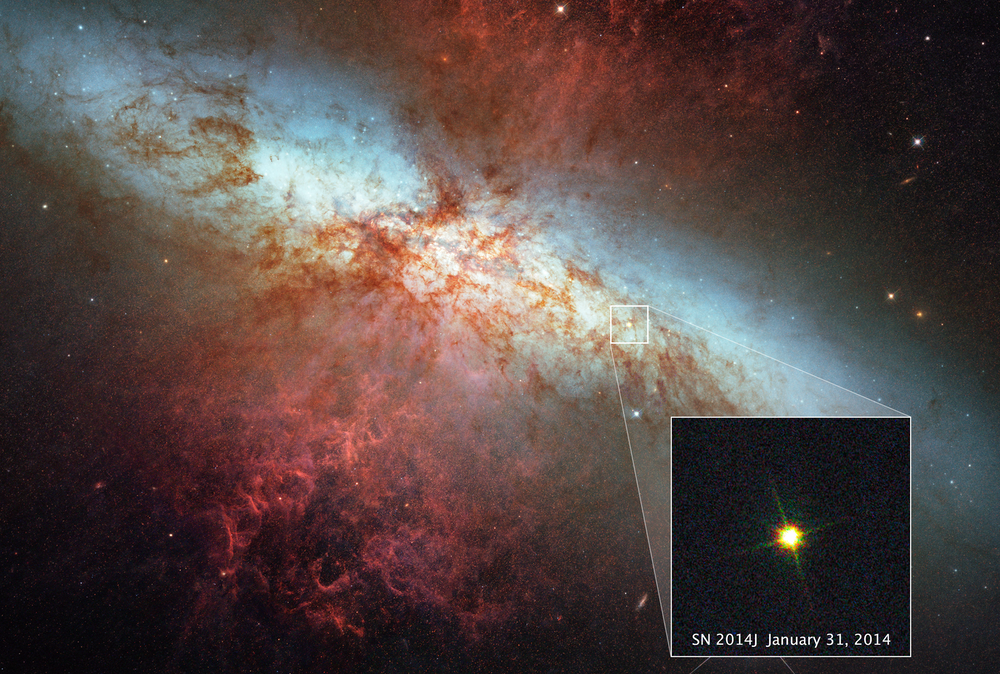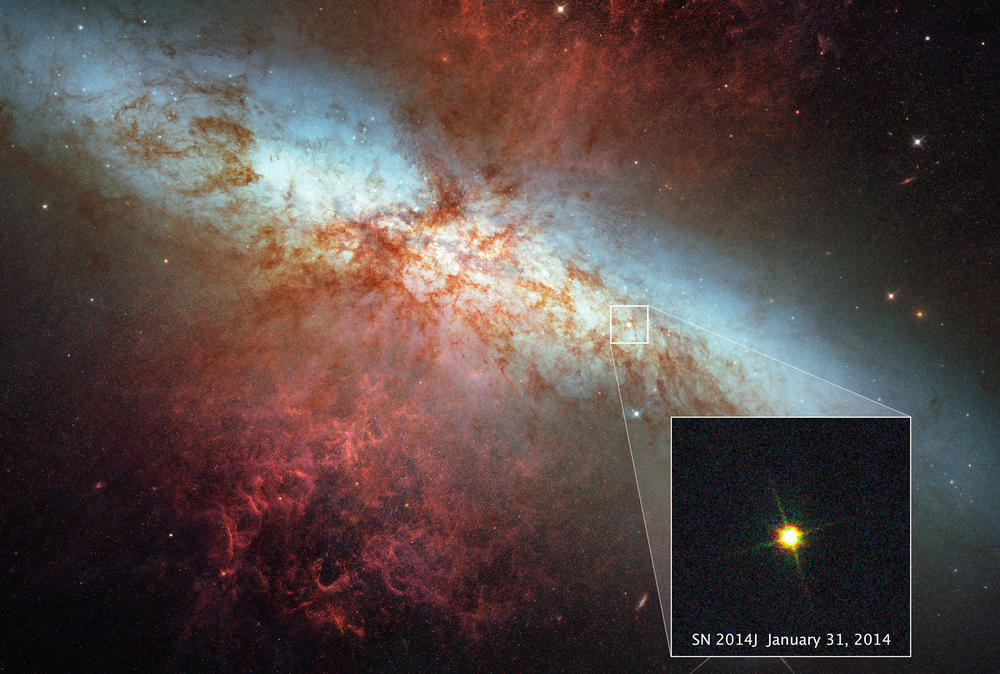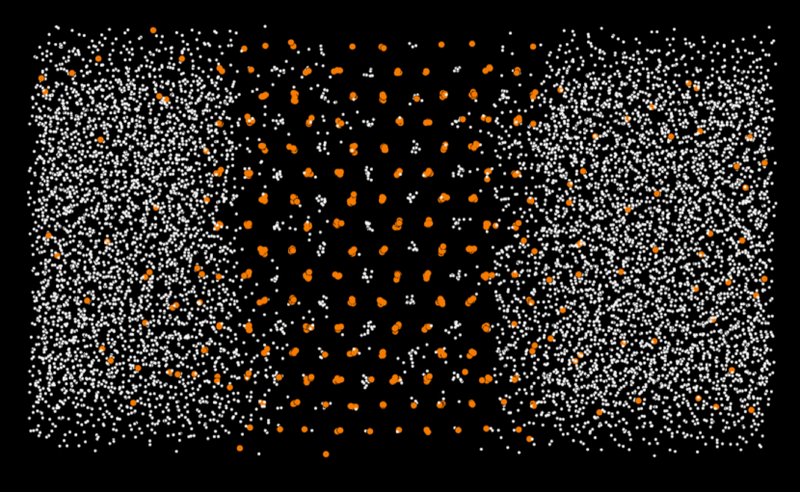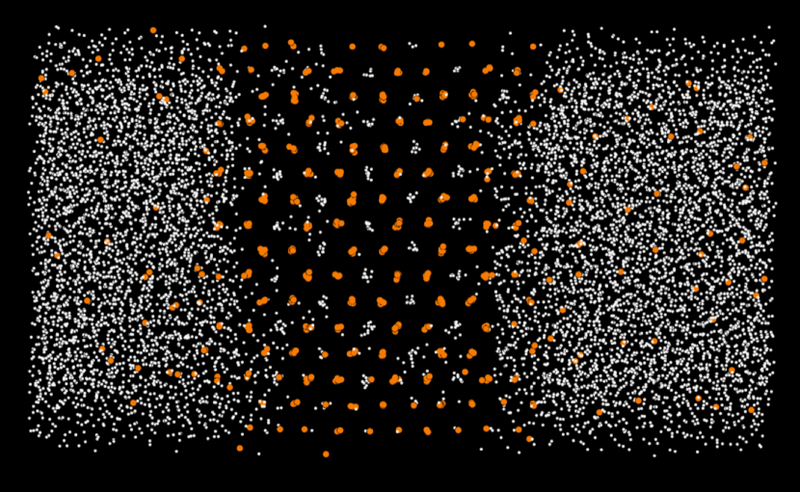Fission Chain Reaction May Trigger Supernovae
A new proposal suggests that when a white dwarf star explodes as a supernova, the initial trigger may be a stellar version of an atomic bomb [1]. This scenario is different from the textbook explanation, which involves an instability resulting from the star sucking mass from a companion star. The researchers suggesting this scenario say that crystallization of uranium during cooling of the stellar core could lead to runaway nuclear fission. This fission “bomb” could in turn trigger an H-bomb-like (nuclear fusion) explosion of lighter elements to produce the supernova. Several key questions about the process remain to be answered, but experts say the theory is worth exploring.
A white dwarf is a very dense star, with a mass comparable to the Sun’s but a size similar to Earth’s. These objects form from Sun-like stars that have densified under gravity after burning most of their fuel. Some white dwarfs end their lives as type 1a supernovae, which are thought to occur only if the star is part of a binary system because a solo white dwarf should be stable as it cools.
But Charles Horowitz of Indiana University and Matt Caplan of Illinois State University point out that heavy elements including uranium are among the first to solidify as a white dwarf’s interior cools. This cooling and solidification process separates the complex plasma-like mixture into its components—a process called phase separation. Even if the initial amounts of uranium and similar elements are very low, “the first solids will be very strongly enriched” in these elements, Horowitz and Caplan write in their paper.
Uranium nuclei occasionally undergo spontaneous fission, splitting into smaller chunks and releasing energy and particles such as neutrons, which can break up nearby uranium nuclei. If the mass of uranium is greater than some critical amount, the fission process can become a self-sustaining chain reaction that produces a massive release of nuclear energy, similar to the explosion of an atomic bomb.
Horowitz and Caplan carried out calculations and computer simulations showing that a critical mass of uranium can indeed crystallize from a typical element mixture found in a cooling white dwarf. If the uranium explodes, they say, the resulting heat and pressure in the stellar core could be high enough to trigger nuclear fusion of lighter elements, especially carbon and oxygen, and thus a supernova. (Similarly, today’s thermonuclear fusion bombs are detonated by fission bombs.)
Identifying an observable signature of this process “may take much work,” says Horowitz. But he thinks that simulations of carbon fusion ignited at the single location where he and Caplan predict it—near the center of the star—might reveal some telltale features of the supernova spectrum or of the brightness-vs-time plot known as the light curve.
Stan Woosley, an astrophysicist at the University of California, Santa Cruz, says that the work presents “a totally new idea.” There probably is “more than one way to make a type Ia supernova,” he says, “and this is certainly the most innovative, creative suggestion I’ve heard in quite a while.”
But he adds that a lot more work is needed to firm up the conclusions. In particular, he questions whether the uranium that crystallizes will be pure enough. “We don’t know for sure,” admits Horowitz. “At this point we think the solid is very enriched in uranium, but we are working on molecular dynamics simulations to refine the composition.”
Paul Bradley, who works on nuclear fusion at the Los Alamos National Laboratory in New Mexico, thinks there may not be enough of the specific uranium isotope (uranium-235) that most easily undergoes fission, and that the conditions in the star might not support a chain reaction. And even if carbon fusion were detonated, Bradley isn’t certain that it would be powerful enough to blow the star apart.
In the end, Horowitz and Caplan are right to frame the idea as a hypothesis at this stage, says astrophysicist Friedrich Roepke of the University of Heidelberg in Germany. But he thinks it’s a hypothesis worth pursuing.
–Philip Ball
Philip Ball is a freelance science writer in London. His latest book is Beautiful Experiments (University of Chicago Press, 2023).
References
- C. J. Horowitz and M. E. Caplan, “Actinide crystallization and fission reactions in cooling white dwarf stars,” Phys. Rev. Lett. 126, 131101 (2021).







